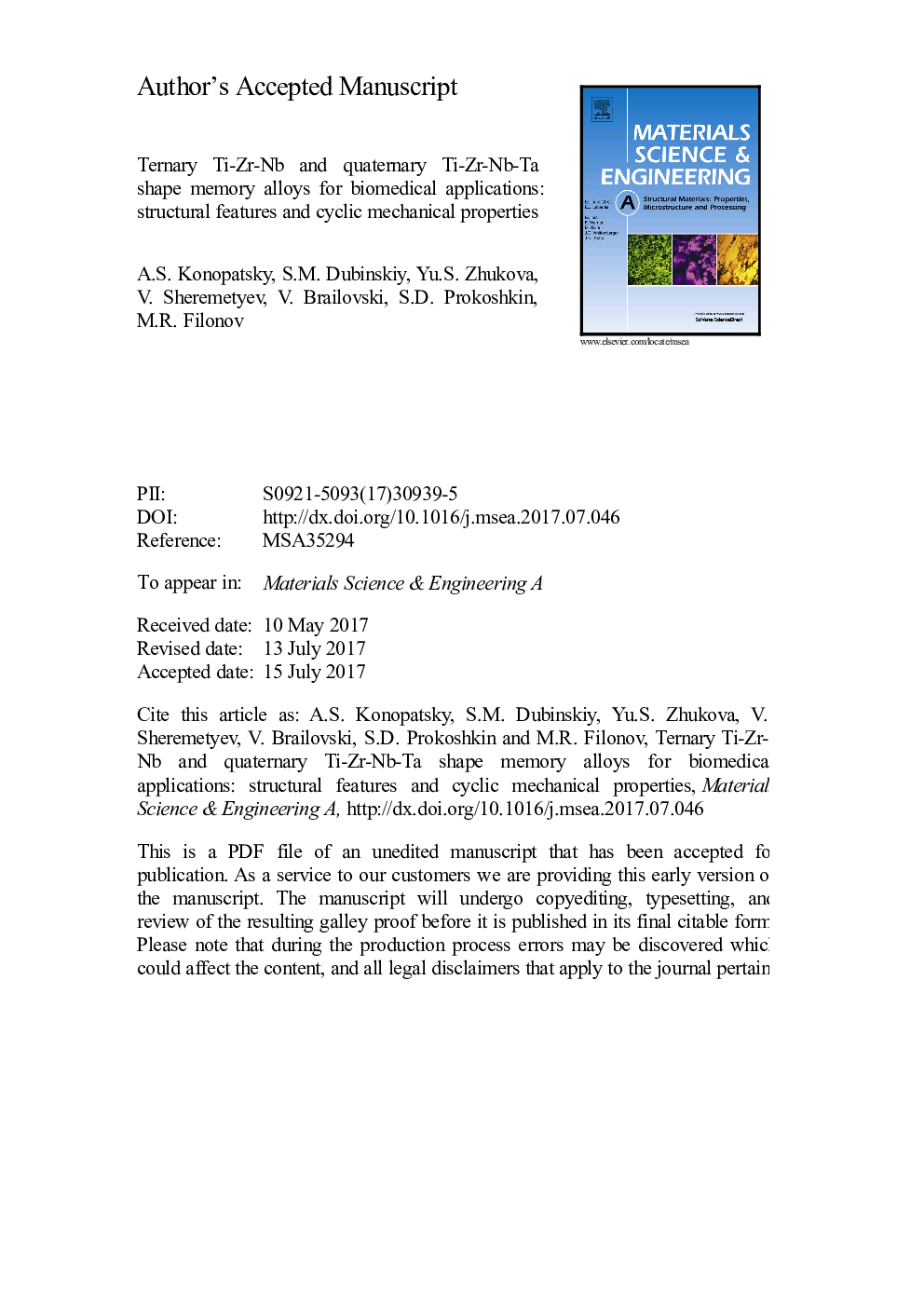| کد مقاله | کد نشریه | سال انتشار | مقاله انگلیسی | نسخه تمام متن |
|---|---|---|---|---|
| 5455842 | 1514641 | 2017 | 22 صفحه PDF | دانلود رایگان |
عنوان انگلیسی مقاله ISI
Ternary Ti-Zr-Nb and quaternary Ti-Zr-Nb-Ta shape memory alloys for biomedical applications: Structural features and cyclic mechanical properties
دانلود مقاله + سفارش ترجمه
دانلود مقاله ISI انگلیسی
رایگان برای ایرانیان
کلمات کلیدی
موضوعات مرتبط
مهندسی و علوم پایه
مهندسی مواد
دانش مواد (عمومی)
پیش نمایش صفحه اول مقاله

چکیده انگلیسی
Ti-18Zr-14Nb, Ti-18Zr-13Nb-1Ta, Ti-18Zr-12Nb-2Ta and Ti-18Zr-11Nb-3Ta (at%) shape memory alloys were obtained by vacuum arc remelting and subjected to different thermomechanical treatment (TMT) schedules. The transmission electron microscopy analysis revealed that a TMT, which consisted of cold rolling with a true logarithmic strain of e = 0.3 and post-deformation annealing at 600 °C (30 min), led to a subgrained structure formation with a size of structural elements of 200-300 nm and to a room temperature superelastic behavior. The X-Ray diffraction (XRD) analysis showed that a gradual replacement of Nb content by its Ta equivalent decreases the impact of alloying elements on the β-phase stabilization phenomenon and suppresses the Ï-phase formation: at room temperature, Ti-18Zr-14Nb and Ti-18Zr-13Nb-1Ta alloys contain mainly parent β-phase, while Ti-18Zr-12Nb-2Ta and Ti-18Zr-11Nb-3Ta alloys contain considerable amount of α”-martensite. The crystallographic resource of recovery strain for all the alloys exceeds 5% and reaches 6%, for the Ti-18Zr-11Nb-3Ta alloy. The fatigue life of the Ti-18Zr-13Nb-1Ta alloy is almost twice as high as that of the Ti-18Zr-14Nb alloy. During multi-cycle mechanical testing, the following regularity appeared for all the alloys tested: during 10-15 first loading-unloading cycles, the mechanisms of plastic deformation and stress-induced martensite formation and stabilization prevail, while after that, the βâα” martensitic transformation mechanisms become dominant, and the alloys' behavior turns from elasto-plastic into superelastic.
ناشر
Database: Elsevier - ScienceDirect (ساینس دایرکت)
Journal: Materials Science and Engineering: A - Volume 702, 15 August 2017, Pages 301-311
Journal: Materials Science and Engineering: A - Volume 702, 15 August 2017, Pages 301-311
نویسندگان
A.S. Konopatsky, S.M. Dubinskiy, Yu.S. Zhukova, V. Sheremetyev, V. Brailovski, S.D. Prokoshkin, M.R. Filonov,